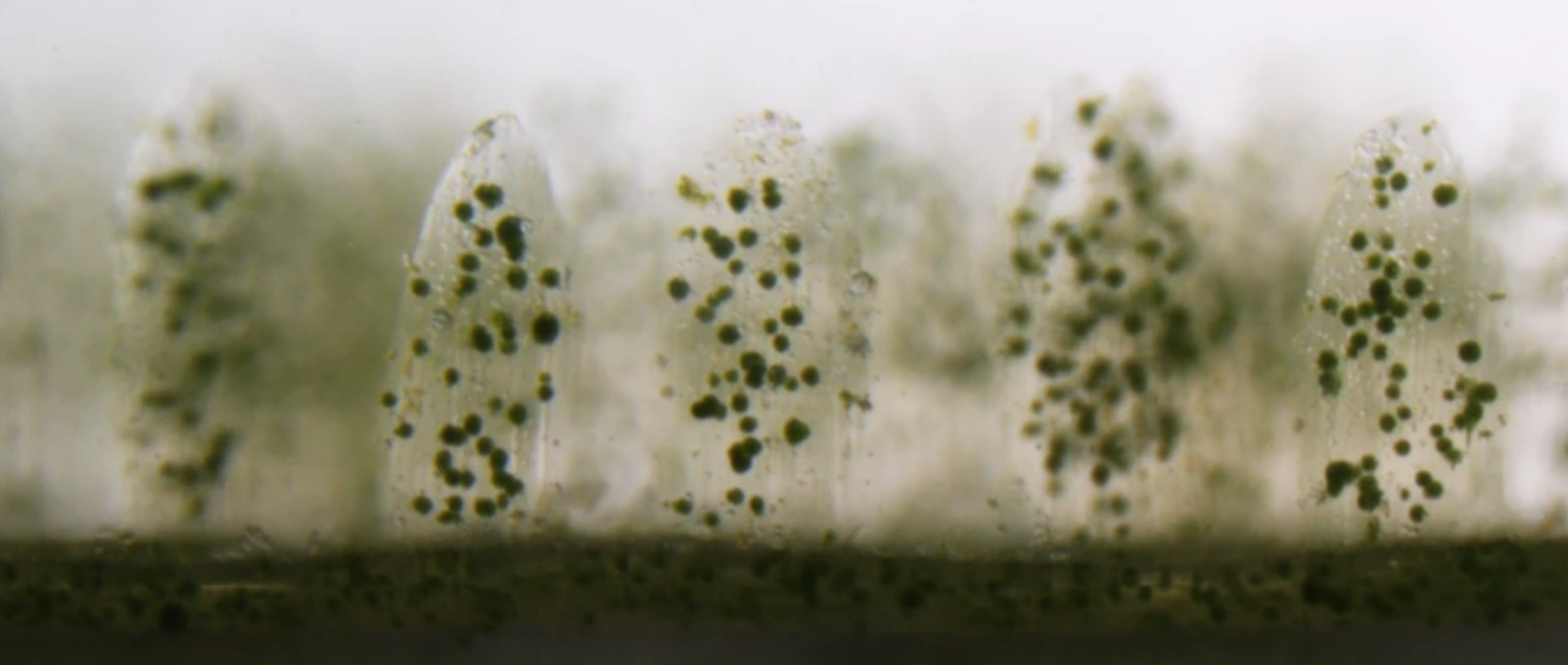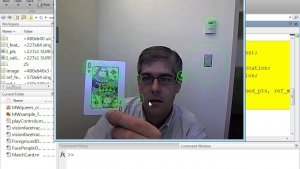Fabricating Bionic Corals Could Improve Bioenergy and Coral Reefs
Replicating structures with live cells have the potential to create environments to study processes and cell development that could become very beneficial to scientists and one of Earth’s largest ecosystems, coral reefs. These structures are complex and interesting for researchers, most reef-building corals have a mutualistic relationship with the algae that live in their tissues. The coral provides the algae with a protected environment and compounds they need for photosynthesis and in return, the algae produce oxygen and supply the coral with glucose, glycerol, and amino acids, which are the products of photosynthesis. The coral uses these products to make proteins, fats, and carbohydrates, and produce calcium carbonate.
This intricate relationship between coral and algae, that began 160 million years ago, can enlighten researchers that seek to provide a source of bioenergy and bioproduct generation. Earlier this month, a group of researchers from the University of Cambridge and the University of California San Diego has developed bionic 3D printed corals as a new tool for coral inspired biomaterials that can find use in algal biotechnology, coral reef conservation and in coral-algal symbiosis research.
 The coral-inspired photosynthetic biomaterial structures were fabricated using a rapid 3D bioprinting technique capable of mimicking functional and structural traits of the coral-algal symbiosis and their results were reported in the journal Nature Communications, opening a new door to bioinspired materials and their applications for coral conservation.
The coral-inspired photosynthetic biomaterial structures were fabricated using a rapid 3D bioprinting technique capable of mimicking functional and structural traits of the coral-algal symbiosis and their results were reported in the journal Nature Communications, opening a new door to bioinspired materials and their applications for coral conservation.
The first author of the paper and a Marie Curie Fellow from Cambridge’s Department of Chemistry, Daniel Wangpraseurt, indicated that “corals are highly efficient at collecting and using light, in our lab, we’re looking for methods to copy and mimic these strategies from nature for commercial applications.”
Wangpraseurt along with his colleagues have found a way to 3D print coral structures and use them as incubators for algae growth. They claim to have tested various types of microalgae and found that growth rates were one hundred times higher than in standard liquid growth mediums.
To create the intricate structures of natural corals, the researchers have developed a bioprinting platform capable of reproducing detailed structures that mimic the complex designs and functions of living tissues, like the photosynthetic matter mimicking coral tissue and skeleton source geometries. This method can print structures with micrometer-scale resolution in just minutes.
To scan living corals and use the models for their 3D printed designs, the team used an imaging technique that uses low-coherence light to capture micrometer-resolution called an optical coherence tomography (OCT), that is usually used for medical imaging and industrial nondestructive testing. The OCT data were imported into MATLAB and converted so that the images could be sliced into 2D image sequences for bioprinting.
The bioink for the hybrid living bionic coral constructs capable of cultivating high algal cell densities was made up of final concentrations of a green microalga; a combination of polyethylene glycol diacrylate (PEGDA) with gelatin methacrylate (GelMA) to make a mechanically robust and tunable hydrogel; the photoinitiator lithium phenyl-trimethyl-benzoyl phosphinate (LAP); a food dye; cellulose-derived nanocrystals (CNC), and artificial seawater.
“We developed an artificial coral tissue and skeleton with a combination of polymer gels and hydrogels doped with cellulose nanomaterials to mimic the optical properties of living corals,” stated co-senior author Silvia Vignolini, also from Cambridge’s Department of Chemistry. “Cellulose is an abundant biopolymer; it is excellent at scattering light and we used it to optimise delivery of light into photosynthetic algae.”
The final bionic coral was designed in CAD software and was then sliced into hundreds of digital patterns with a custom-written MATLAB program. The digital patterns were uploaded to a digital micromirror device (DMD) in sequential order and used to selectively expose the prepolymer solution for continuous printing.
The custom-made 3D bioprinter uses light to print coral microscale structures in seconds. So that the printed coral copies natural coral structures and light-harvesting properties, create an artificial host-microenvironment for the living microalgae.
Cambridge University suggested that the coral-inspired structures were highly efficient at redistributing light, just like natural corals, since only biocompatible materials were used to fabricate the 3D printed bionic corals.
This is critical for replicating structures with live cells, said co-senior author Shaochen Chen, also a professor from UC San Diego. “Most of these cells will die if we were to use traditional extrusion-based or inkjet processes because these methods take hours. It would be like keeping a fish out of the water; the cells that we work with won’t survive if kept too long out of their culture media. Our process is high throughput and offers really fast printing speeds, so it’s compatible with human cells, animal cells, and even algae cells in this case,” he went on.
The technique allows replication of any coral architecture, providing a variety of design solutions for augmenting light propagation. The team of researchers claims that their work “defines a class of bionic materials that is capable of interacting with living organisms and can be exploited for applied coral reef research and photobioreactor design.”
Wangpraseurt explained that “by copying the host microhabitat, we can also use our 3D bioprinted corals as a model system for the coral-algal symbiosis, which is urgently needed to understand the breakdown of the symbiosis during coral reef decline.”
Undoubtedly, the decline of coral reefs has been well documented and is a great concern to conservationists and should be a pressing matter for society at large. A 2017 study by UNESCO claims that the world’s coral reefs, from the Great Barrier Reef off Australia to Seychelles off East Africa, are in grave danger of dying out completely by mid-century unless carbon emissions are reduced enough to slow ocean warming.
As part of a growing concern to aid this fragile underwater ecosystem, Wangpraseurt, along with other colleagues has created a company, called mantaz, that uses coral-inspired light-harvesting approaches to cultivate algae for bioproducts in developing countries, as well as restore coral reefs with the help of local fishermen.

A colony of the coral Stylophora pistilla growing on Watakobi Reef, East Sulawesi, Indonesia (Credit: University of Cambridge)
“We hope that our technique will be scalable so it can have a real impact on the algal biosector and ultimately reduce greenhouse gas emissions that are responsible for coral reef death,”
The study, funded by the European Union’s Horizon 2020 research and innovation program, as well as the European Research Council, the David Phillips Fellowship, the National Institutes of Health, the National Science Foundation, the Carlsberg Foundation, and the Villum Foundation, appears promising. By mimicking the coral’s light management strategies and designing a bionic coral made out of sustainable polymers for enhanced microalgal light absorption and growth, they were able to define a class of bionic materials that is capable of interacting with living organisms and can be exploited for coral reef research and energy production.
The post Fabricating Bionic Corals Could Improve Bioenergy and Coral Reefs appeared first on 3DPrint.com | The Voice of 3D Printing / Additive Manufacturing.
What is Metrology Part 13: Object Recognition
We as humans have faulty perception of the physical environment we live in. Although we are able to distinguish 2D items and 3D items, we do not have the ability to measure them in real time with numeric values. We need to use outside devices to assist us. We have discussed at length these topics within our metrology series, but today we will take a look specifically at a subsection of knowledge within this field and computer vision. With computer oriented object recognition, humans are attempting to make the world more precise through the lens of a computer. There are a variety of things that get in the way of precise object recognition.
Object recognition is defined as technology in the field of computer vision for finding and identifying objects in an image or video sequence. Humans have the ability to recognize objects with bare minimal effort, even though an image varies in different viewpoints. The image also varies when it is translated, scaled, and rotated. People are able to recognize images even when they are somewhat incomplete and missing critical information due to an obstruction of view. Humans use the power of gestalt psychology to do such. Gestalt psychology is defined as a German term interpreted in psychology as a “pattern” or “configuration”.
Gestalt is based on understanding and perceiving the whole sum of an object rather than its components. This view of psychology was created to go against a belief that scientific understanding is the result of a lack of concern about the basic human details.
The ability for a computer to recognize parts and synthesize them into a larger body object is the main source of error within computer vision and object recognition. This task is extremely challenging for computer vision systems. One must understand that computers have immense capabilities in logically describing constituents or smaller parts, but adding them together consistently to form the basis of a larger item is still difficult. This is personally why I am not too worried about a robot takeover anytime soon. Many approaches to the task have been implemented over multiple decades.
Matlab and object detection/recognition
For a computer to do sufficient object recognition there needs to be a ton of precision with identifying constituent parts. To do this, a computer relies on a vast amount of point cloud data. A point cloud is defined as a set of data points in space. Point clouds are usually produced by 3D scanners. With this point cloud data, metrology, and 3D builds can be created. An object can be recognized through using point cloud data to create a mesh. For us as humans, we are able to interpret that mesh within our 3D realm. However, computers are not that great at such interpretation. They just give us great and precise data to work with. It is important to note that computers are okay at object detection. This refers to being able to decipher a part or object within a larger scene. But when we place multiple parts into a scene or an item with a complex geometry, things become difficult for a computer to decipher. Hence we only use 3D scanners to grab point cloud data and not process what a 3D object is.
Currently in terms of object recognition, computers can barely recognize larger scale items within a 2D setting. It will take a long time for computers to have the graphic capabilities to even decipher what an object would be in a 3D environment. For example, MATLAB is a powerful coding software used for large scale data processing, but computers require a large amount of machine learning and deep learning techniques to process 2D images. First these systems need to do this at a rate of 99.9% confidence before one can move on to 3D images. Humans are not necessarily 100% accurate in terms of processing images either, but they are still slightly more consistent than computer vision techniques. Overall I am interested in learning how to develop such technologies, and I wonder who are the people and organizations wrestling with these problems daily.
The post What is Metrology Part 13: Object Recognition appeared first on 3DPrint.com | The Voice of 3D Printing / Additive Manufacturing.


 3D Perception
3D Perception
